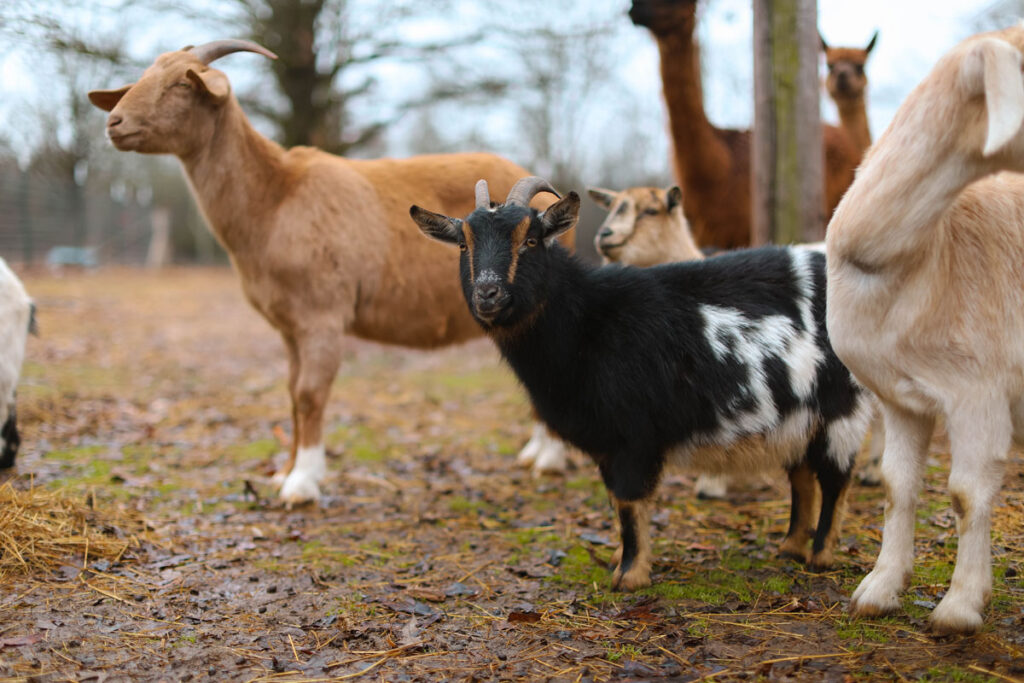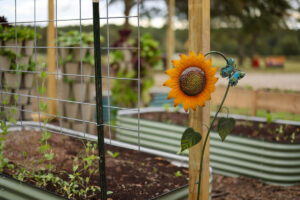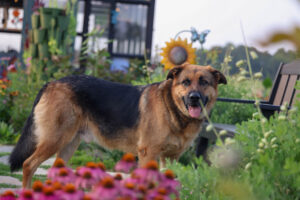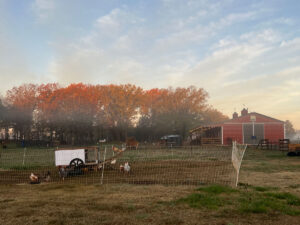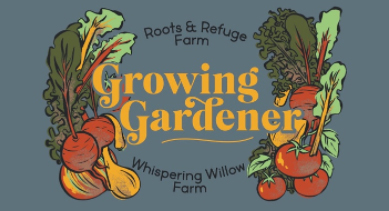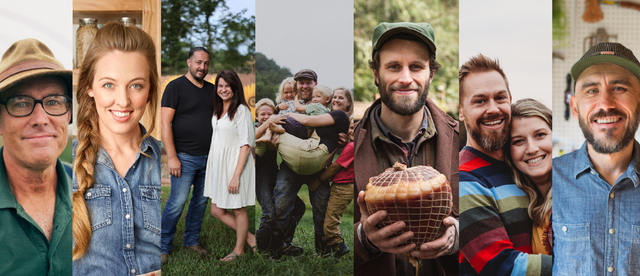Take the guesswork out of bottle feeding baby goats by knowing how much milk newborn kids need, how often to schedule feedings, and how long to bottle feed before weaning. Get some tips to help you troubleshoot why your baby goat isn't taking the bottle. Plus a bonus feeding schedule chart.
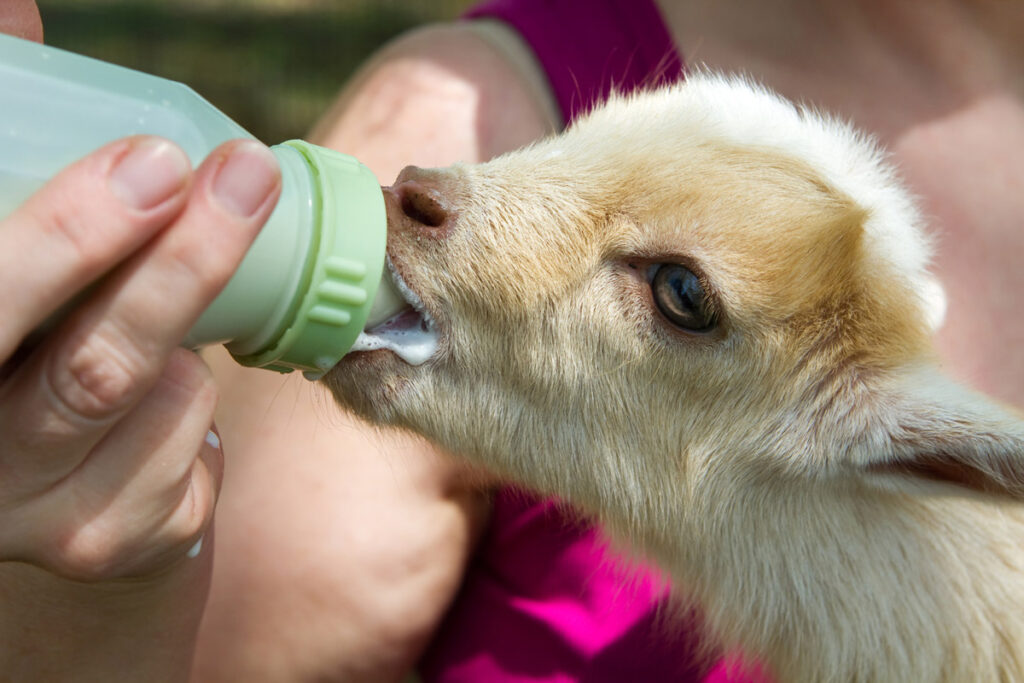
If you are looking for information about how to milk a goat or about milk breeds like Nigerian Dwarf, Nubian, and Lamancha, check out my post on how to milk a goat.
Why I Bottle Feed Baby Goats
We have enjoyed raising goats on our homestead for years. We prefer our goat kids to be dam-raised. However, there are two reasons why we have bottle-fed them instead.
First, in emergencies. Like when our doe passed away unexpectedly from hypocalcemia leaving us with two young goat kids that needed to be bottle-fed.
Some does will reject their kids, especially if there are multiples. If this happens, it is necessary to step in and bottle feed the newborns.
Other times, I have chosen to train a baby goat to a bottle.
For instance, if I have bucklings that I am planning to sell, I put them on the bottle so that they can be away from their mother.
Once, we had a doe that got a lopsided udder because her kid would only drink from one side. Even with me milking the other side morning and night, I wasn't sure I could prevent damage to her udder so we pulled off the kid and bottle-fed it.
Is Dam Raising Better
In my research, I did not find a significant difference in the health of adult goats that were dam-raised versus bottle-fed babies. Whichever you choose, keep these important things in mind.
Dam-raising kids is much easier on the goat handler because the doe does all the work. In our experience, a doe will usually do a fine job if you allow her to raise her kids.
When dam-raising, the kids will naturally get colostrum from the mother goat's milk. The colostrum supplies antibodies to give the kid vital immune protection in the first months of its life.
If you are bottle-feeding newborns, consider a colostrum replacer. (Cow's milk can be used as a substitute if the cow has just calved.)
However, there can be a drawback to dam-raised kids too. They can become wild because they are not used to human interaction. It is important to be intentional to handle dam-raised kids often to keep them friendly and used to humans.
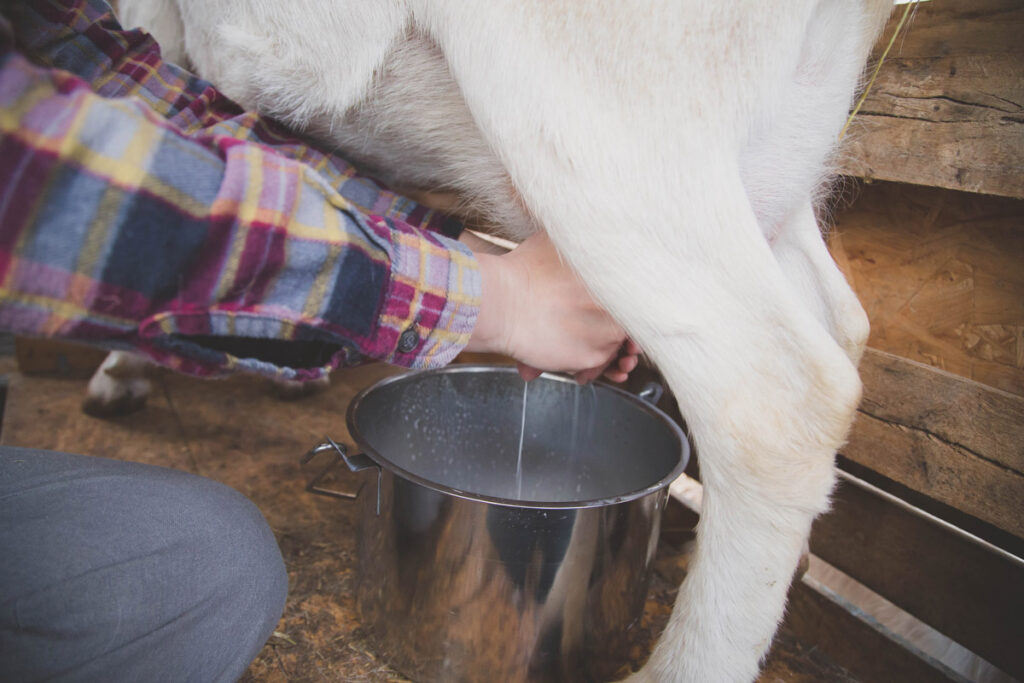
How Many Ounces of Milk Should a Baby Goat Drink
It is recommended that newborn (full-sized goat breed) kids 1 to 2 weeks of age should have at least 16 oz of milk each day. So you would give them 4 to 6 oz in a bottle four or five times a day.
If you are feeding colostrum, newborn kids need about 10% of their body weight in the first 24 hours.
These amounts vary depending on the size of the baby goat. If you are using a milk replacer, it is a good idea to follow the directions that come with it.
Keeping your goat kids on a feeding schedule will help prevent overfeeding them. Eating too much can cause them to have serious digestive issues like bloat and diarrhea.
If you are looking for a feeding schedule, Purina has a helpful bottle-feeding kid goats chart on their website.
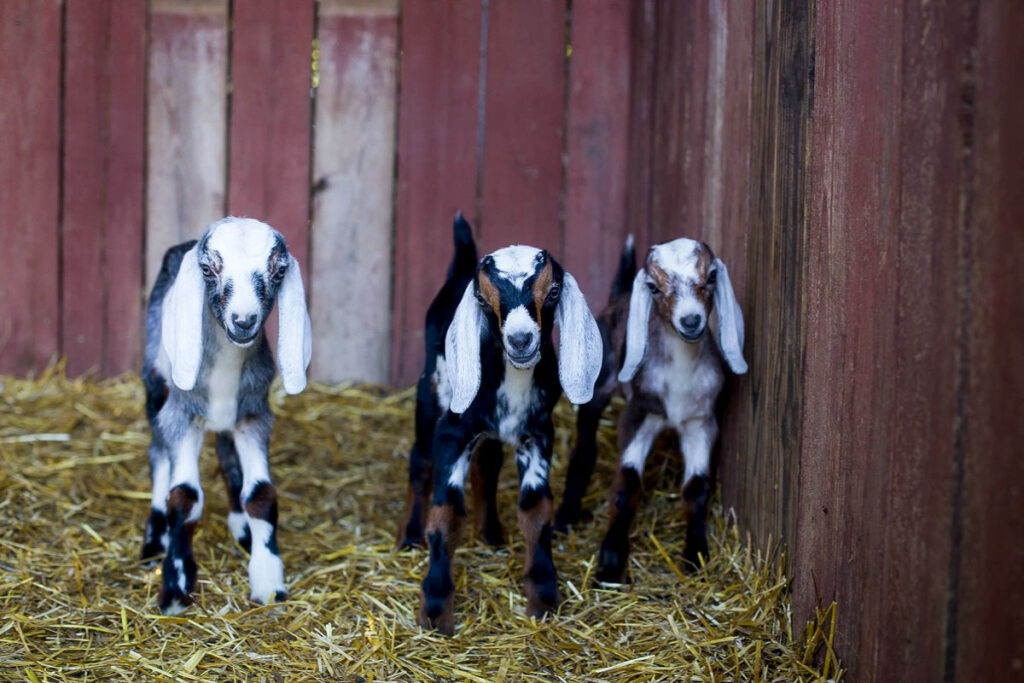
How Long Do You Bottle Feed A Goat
Baby goats can be weaned as early as one month old, but it is better to wait a few weeks more.
Even though they don't really need water and hay while bottle feeding, it is a good idea to put some in their stall. If they have access to it they will practice and start to learn how to eat and drink it.
You will know your kid is ready to be weaned when it can eat hay, drink water, and weighs more than twice its birth weight.
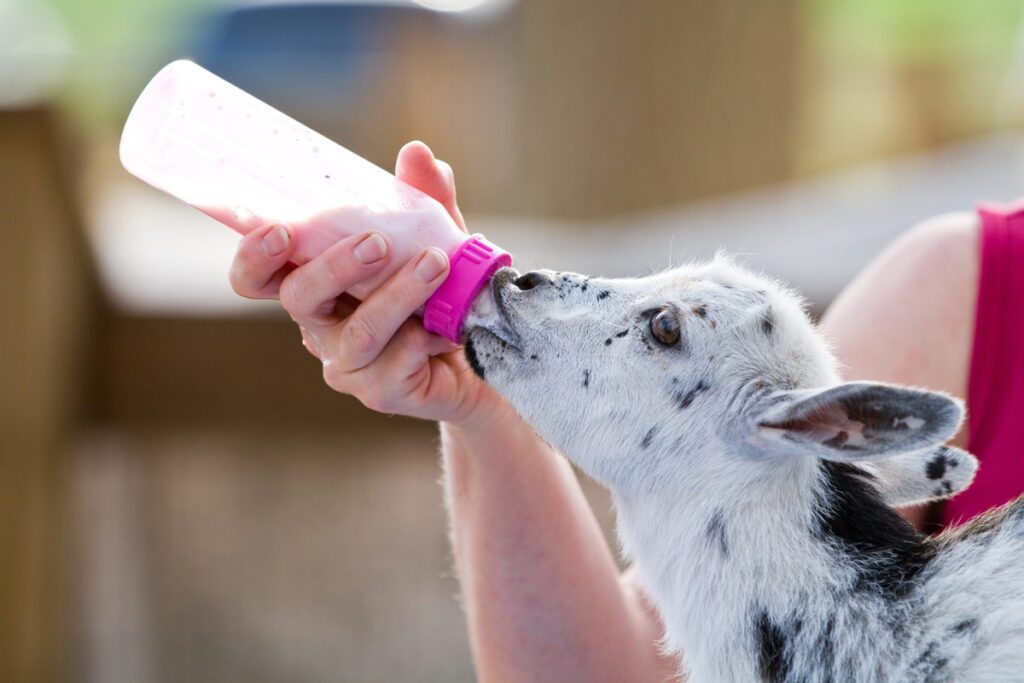
How to Bottle Feed Baby Goats
To feed a baby goat with a bottle, take the kid in your lap. Cradle the kid and gently hold its face up. With the bottle at a steep angle, place the nipple in its mouth.
Sometimes a goat kid will take to the bottle right away. It's always nice when you get an easy one.
Other times, it will take a lot of time and persistence to train them to take a bottle. Some kids will grit their teeth and won't open their mouth for you. Have patience and keep trying.
The baby goat may start chewing on the nipple instead of sucking. If they are opening their mouth and swallowing the milk, at least they are getting some nourishment. Keep doing that and eventually, they will learn to suck instead of chew.
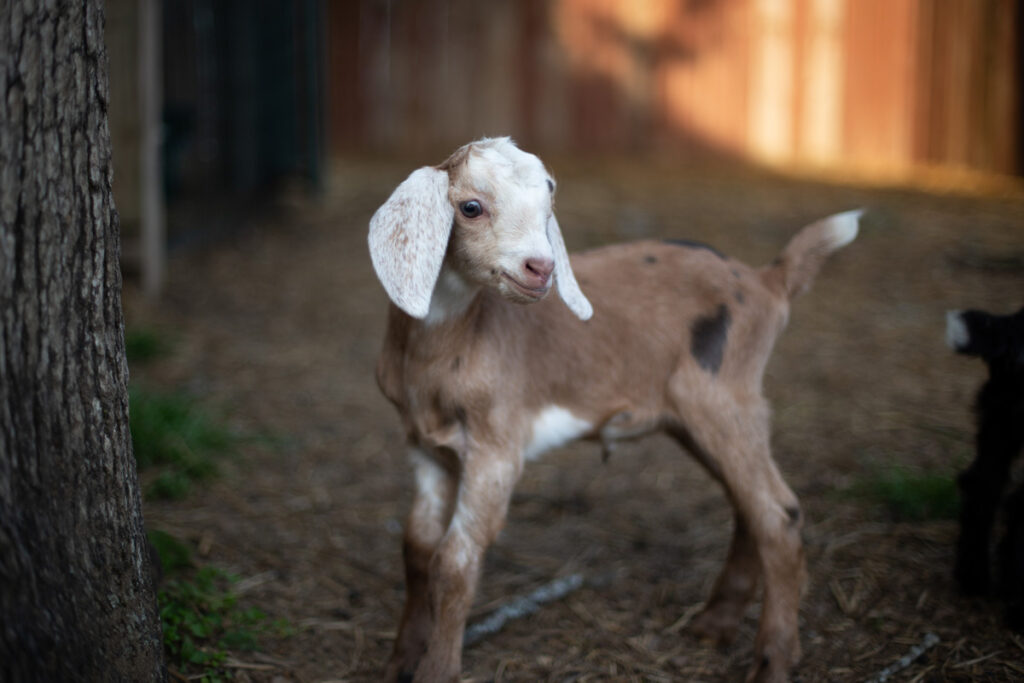
Tips For What to Do If Your Baby Goat Won't Take a Bottle
- Use warm milk – Goat's milk is warm when coming from the mama's udder. Warm the milk in the bottle and test the temperature just like you would for a human baby's bottle by shaking some onto your arm. It should neither feel hot nor cold, but body temperature. If the kid is really fighting you, check to see if the milk has cooled off a lot.
- Try different nipples – If they are completely rejecting one nipple try another one. Pritchard nipples are great and can be used with most plastic bottles. You can also try regular baby bottles or rubber nipples that go on glass jars.
- Try a different position – Some bottle babies will do better feeding on your lap and some will do better standing up. Kids that have been dam-raised for any length of time have always eaten standing up. Try adjusting the feeding position to see if that solves the problem.
- Feed smaller amounts more often – Remember that kids are used to grazing on their mom all day instead of drinking a few large servings. Start with less milk and feed them more often.
- Be patient and calm – Bottle feeding baby goats can be frustrating when you are trying to transition to a bottle. You know how important it is for them to eat, but they aren't cooperating. Getting frustrated, upset, or hurried may stress or scare the kid while being calm and patient will help the goat to learn that bottle feeding is okay.
It's always best to keep in mind the health of the kid and try to find the bottle-feeding time an enjoyable experience (as much as is possible!).
